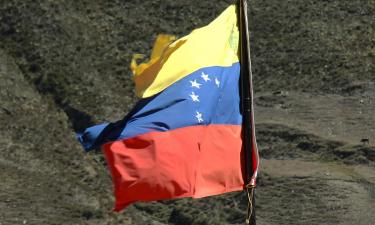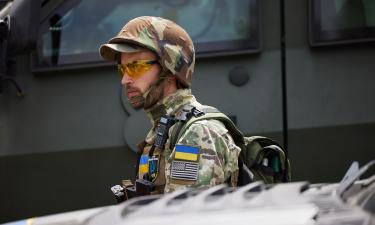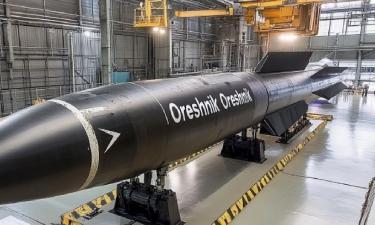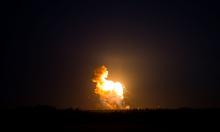Russia builds world’s biggest nuclear icebreaker
Ordinary passers-by walking along the Neva River embankment in St. Petersburg can see the world’s biggest atomic icebreaker 50 Let Pobedy (50th Anniversary of Victory) standing at the walls of the Baltiysky Plant. The boat is a prospective record-breaker in the Guinness Book of Records.
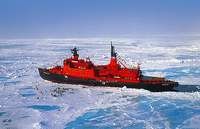
Russia is the only country in the world that has atomic icebreakers, and it is unlikely that icebreakers may appear in some other country soon. Icebreakers are essential for Russia. Majority of Russia’s minerals are located close to the Arctic Ocean shores from where they can be removed either by sea or by air. At that, only platinum, gold or diamonds can be transported by air; others must be delivered by sea where icebreakers are of great help.
Icebreakers provide all-year-round navigation on the route between Russia’s Murmansk and Dudinka; and further in the east they are important for navigation even in summer. There are several types of icebreakers: atomic and diesel ones lay the way for ships in the ocean waters; diesel-electric icebreakers clear the water area of Arctic ports and others operate in the mouths of Polar rivers where majority of cargo ports are located.
Linear icebreakers perform the hardest job of guiding convoys; they operate far off the shores and there are few northern ports that can receive such giants. For this very reason the world’s first nuclear icebreaker Lenin was built and put into operation in 1959. Now, Russia has the fleet of eight nuclear icebreakers that do not need to enter ports within the entire navigation. Five years ago, the nuclear icebreaker Arktika (Arctic) broke the world record when stayed amidst the ice for 357 days and did not enter the home port of Murmansk.
Arktika was launched in 1975 is the leader among the world’s biggest icebreakers but not the biggest one. The icebreaker 50 Let Pobedy which is to be finished soon at the Baltiysky Plant is nine meters longer than Arktika and makes up the world record showing of 159 meters. An ecology compartment added to the basic hull makes up the nine meters. The new icebreaker is to become the first one meeting the world requirements in waste disposal into the ocean; the ecology compartment will reclaim wastes.
Atomic icebreakers of the Arktika class carry two nuclear reactors of 171 megawatt each. As a rule, captains operate reactors one after another, not both at once.
The reactors operate so that no radiation leakage may occur.
The hull of an icebreaker is its key instrument in the struggle against ice. Half-round boards protect icebreakers from the pressure of ice fields and push them out; and the chamfered rostrum allows icebreakers get onto the ice fields and break them with the heavy weight. The thickness of an icebreaker board makes up 100 millimeters which is twice as thicker than the frontal armor of the famous T-34 tank. Icebreakers of the Arktika class can move at a speed of 2-3 knots (4-5.5 km/h) in the ice of 2.8 m thick. Usually, icebreakers have to break Arctic ice that is not thicker than 2.2 m. Ice patrol helps icebreakers find safer routes.
There were polar aviation bases along the Arctic Ocean shores in the Soviet epoch that were first of all employed for ice patrol. Il-14 and Il-18 airplanes of the ice patrol soared up every morning. Today, icebreakers make their ways through the ice with the assistance of photographs made from space, captain’s experience and their own aviation fleet. The icebreaker 50 Let Pobedy has two Ka-32 helicopters. This is the last icebreaker of the Arktika class to be built in Russia. Together with the eight operating atomic icebreakers they will be enough to guide convoys for the next ten years and guarantee transportation of 5-7 million tons of cargo a year along the northern seaway (today, the showing makes up less than 1.5 million of tons). However, optimistic forecasts say that Russia may increase transportation by sea up to 10-15 million tons a year when more mines begin to operate across the polar circle. What vessel will be able to transport such heavy loads?
It is supposed that icebreakers of the LK-60 type will be used for this purpose in the future. These icebreakers may operate both in coastal shelf areas and in the deep ocean. Engineers also plan to start developing icebreakers with new nuclear installations that will be able to guide convoys from Europe to America through the North Pole. And engineers also suggest really fantastic projects of submarine atomic icebreakers made on the basis of the Typhoon atomic submarines.
But still, 50 Let Pobedy will remain a record big and powerful icebreaker for decades as Russia does not plan to build more icebreakers of this category.
Izvestia Nauki
Translated by Maria Gousseva
Subscribe to Pravda.Ru Telegram channel, Facebook, RSS!
